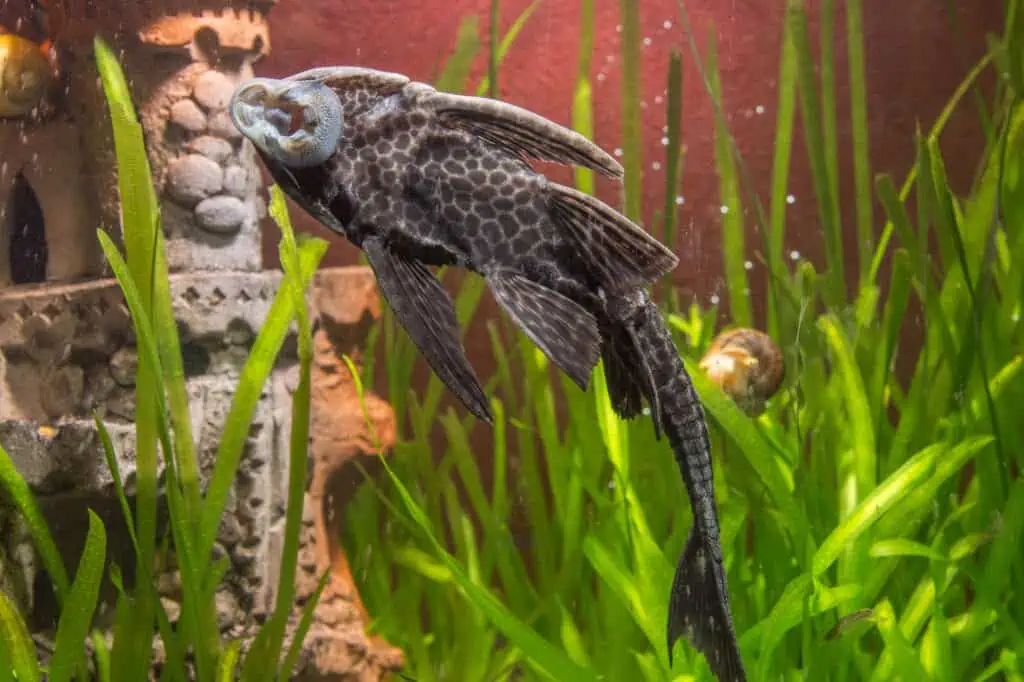I’d be happy to take a bet that you clicked on this page for one of two reasons. Either:
A) You’ve got a problem with snails overrunning your fish tank and are looking for fish that will eat them for you.
Or,
B) You have some precious pet snails that are doing a fantastic job at keeping your tank clean, and you want to know which fish are unsafe to put in the tank with them.
Both are great reasons! But whichever it is, we’re going to take a run down through the 22 top freshwater fish and invertebrate species that love to eat aquarium snails. Here we go!
Yoyo Loach
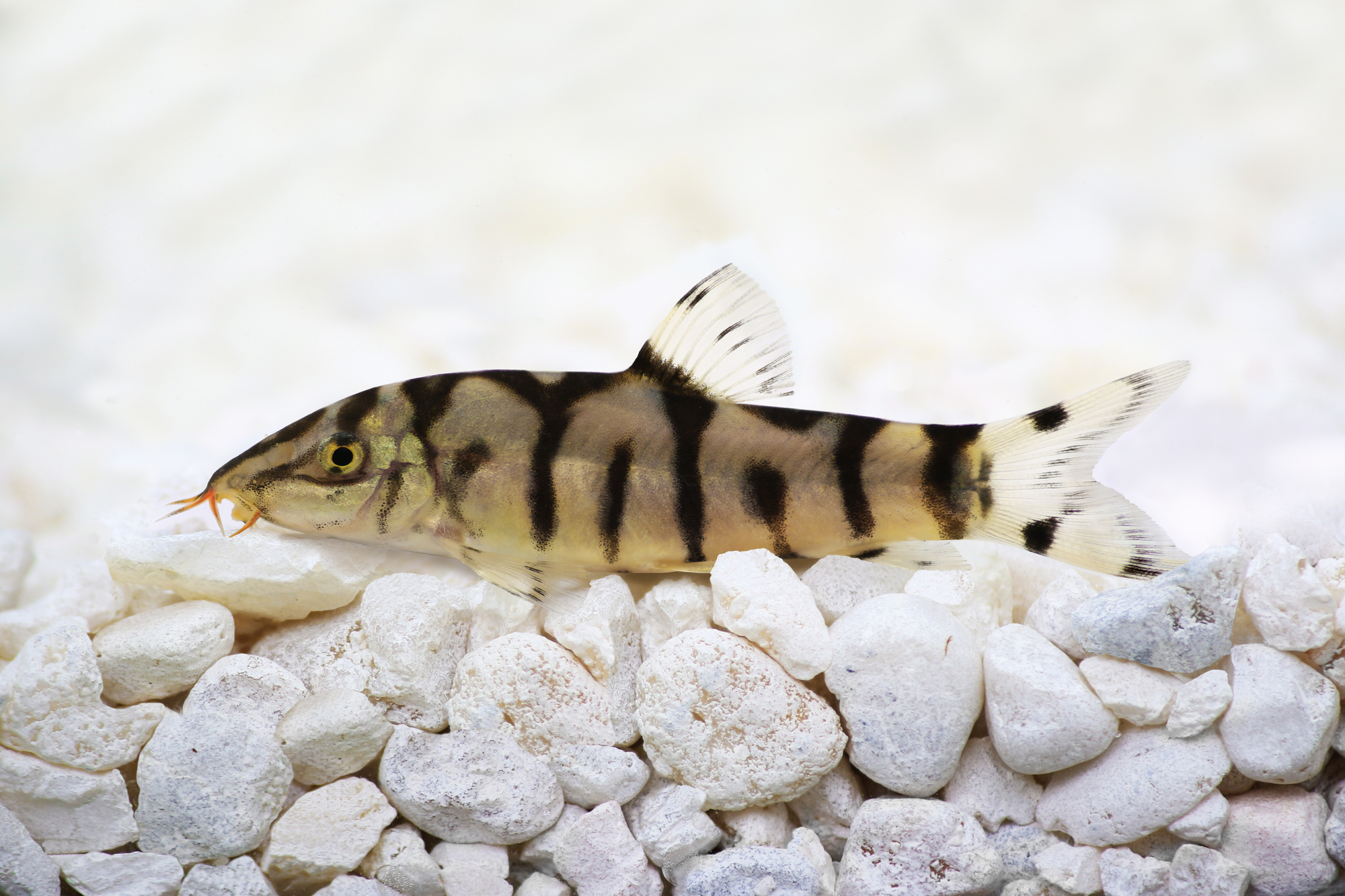
- Scientific name: Botia almorhae / Botia lochata
- Adult size: 4-5 inches
- Temperament: Semi-aggressive
Yoyo loaches are one of the ultimate snail killers in the aquarium trade, and some people buy these fish especially to reduce their snail population!
One of the things that makes yoyo loaches such proficient snail hunters is that they love to dig in the substrate where snails, like Malaysian trumpet shells, are hiding. With nowhere left to run, unwanted snails can quickly get decimated by this mollusk-loving fish!
Yoyo loaches are not the easiest fish to keep, however. Since they need very clean, well-oxygenated, acidic water to remain healthy, we’d recommend them for intermediate-advanced fish keepers only.
Chameleon Cichlids
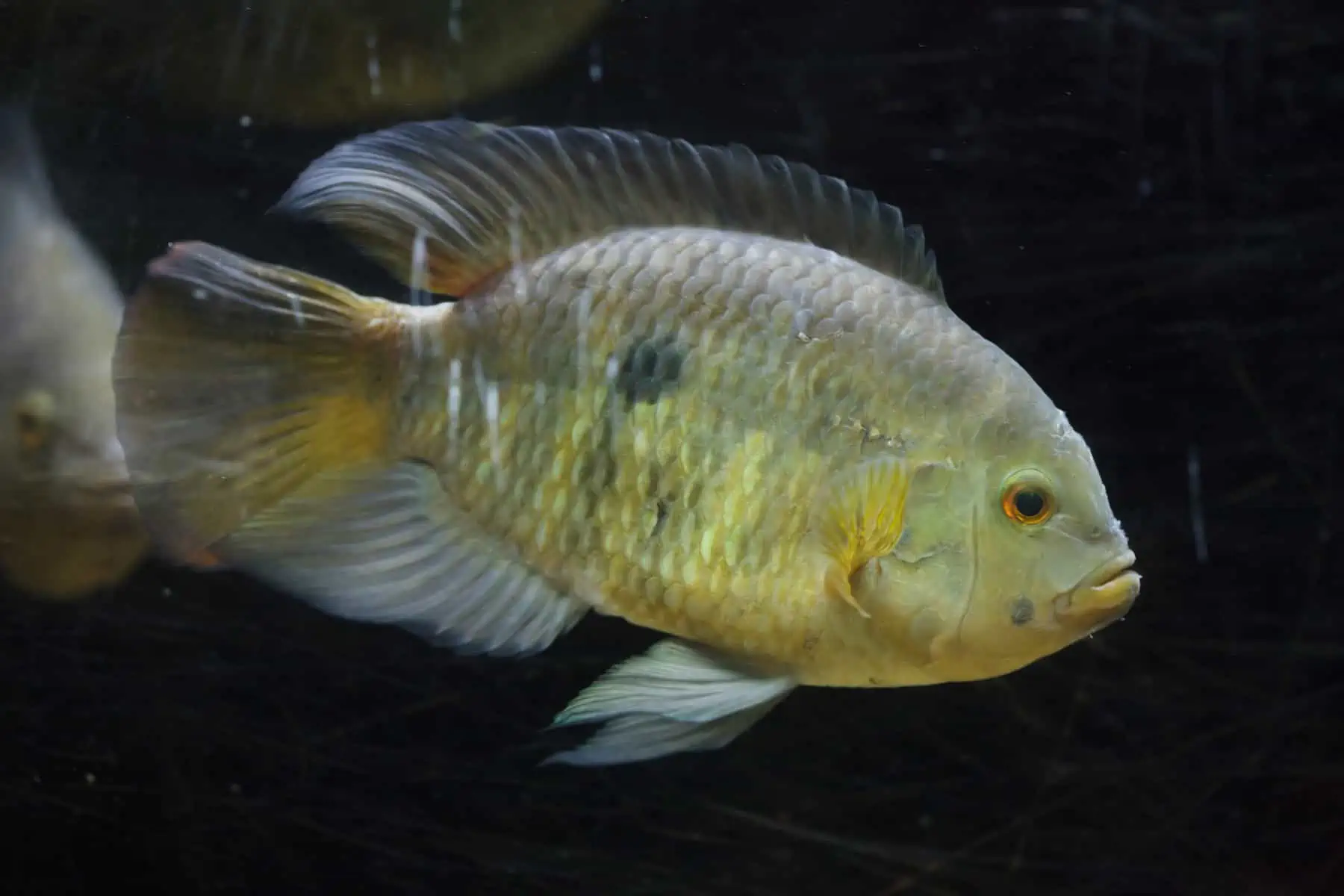
- Scientific name: Australoheros facetus
- Size: 7-8 Inches
- Temperament: Fairly peaceful
Chameleon Cichlids are a lesser-known cichlid from South America, and, despite being fairly peaceful towards other fish, they are expert snail killers!
Some cichlid specialists have reported that these fish are one of the best for crushing snails, and since they grow to 7 or 8 inches, they should be able to remove even fairly large snails too.
Unlike many members of the cichlid clan, these fish are remarkably docile, so, it’s surprising they aren’t more often seen in pet stores.
Pea Puffer Fish
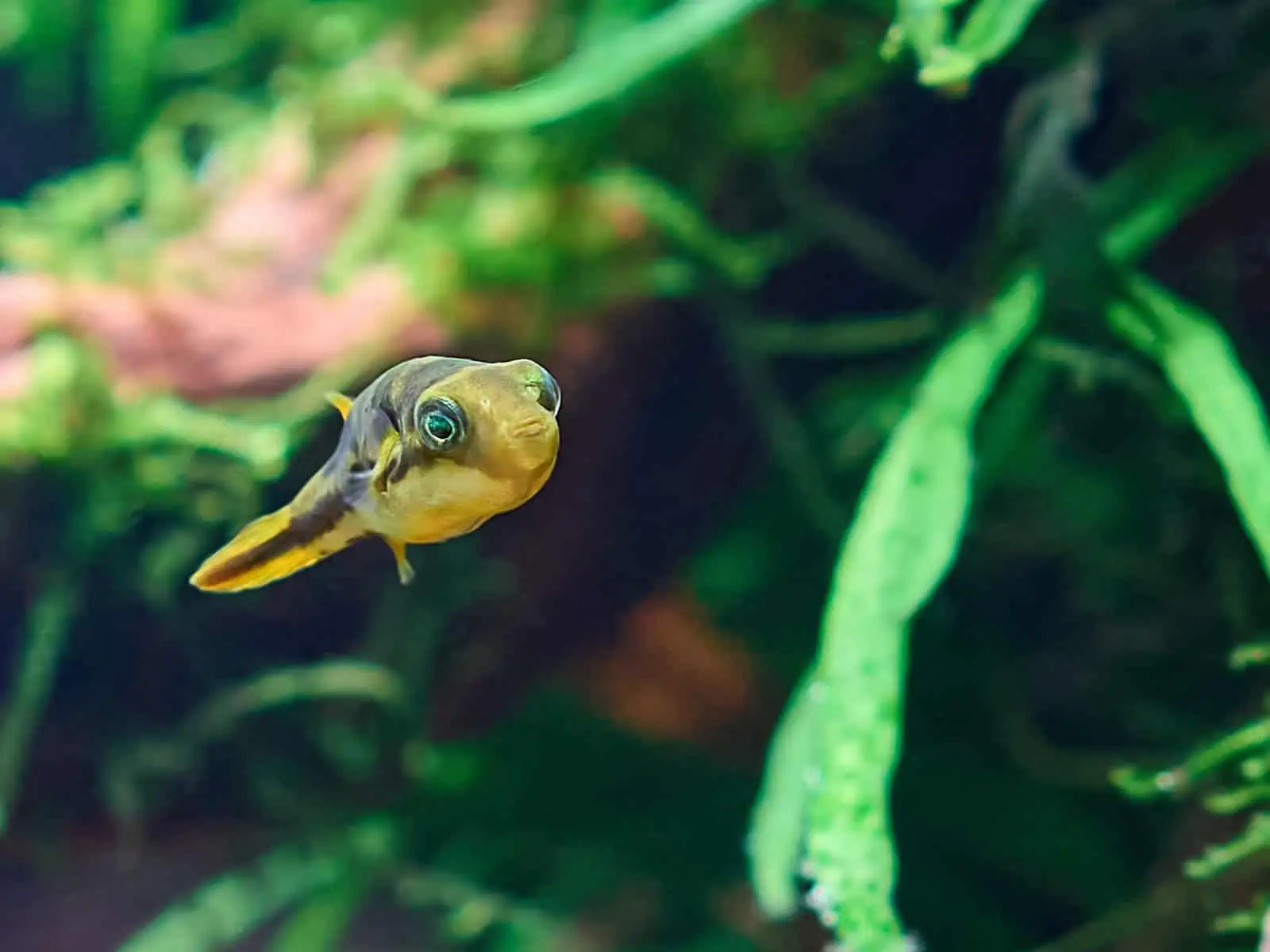
- Scientific name: Carinotetraodon travancoricus
- Adult size: 1 inch
- Temperament: aggressive
The pea puffer, or ‘dwarf puffer fish’, may be tiny and adorable, but they’re also lethal snail hunters!
This is because pea puffer fish have a secret weapon that they use to crush snail snails and devour their soft insides – their beaks! Made from sharp beak-shaped tooth plates, puffer fish use these to break open and slice up their prey.
But since they’re only an inch long, don’t expect your dwarf puffers to take down the biggest mystery snails or rabbit snails.
They’re more likely to feed upon smaller species such as pond snails and bladder snails. Some people even breed snails simply as a food source for their puffer fish!
Avocado Puffer Fish
- Scientific name: Auriglobus modestus
- Adult size: 4-6 inches
- Temperament: Very aggressive!
Avocado pufferfish are less well-known than other species of freshwater pufferfish, but they’re equally good at eating snails!
In fact, puffer fish need to eat a healthy volume of invertebrates with tough shells in their diet to wear down their beaks, which would otherwise grow too long.
But be warned – avocado puffers are larger than dwarf puffers and are extremely aggressive. If you put your hand in the tank you may well get bitten, which might even result in a serious injury!
Oscars

- Scientific Name: Astronotus ocellatus
- Adult Size: 10-14 inches
- Temperament: Aggressive
Oscars are powerful, predatory fish that will hunt down and kill anything they can fit in their mouths. So, if your oscar is big enough to eat them, snails are most definitely on the menu!
But because Oscar fish are so aggressive, they’re definitely not a fish you can throw into a community tank to tackle a snail problem. If you’re wanting to keep this large cichlid in a tank that already has a snail problem though, he should make light work of them.
Dwarf Chain Loach
- Scientific name: Ambastaia sidthimunki
- Adult size: 2.5 inches
- Temperament: Mostly peaceful
Dwarf chain loaches may not be as well known as many other fish on our list, but this handsome little loach from Southeast Asia has a good appetite for snails and snail eggs!
But, as with many other loaches, dwarf chain loaches come from fast-flowing rivers and streams, meaning they need a tank with clean water and a fast flowing current to feel at home.
They’re also schooling fish, so should be kept in groups of at least six. Another one for intermediate or advanced aquarists only.
Bala Sharks
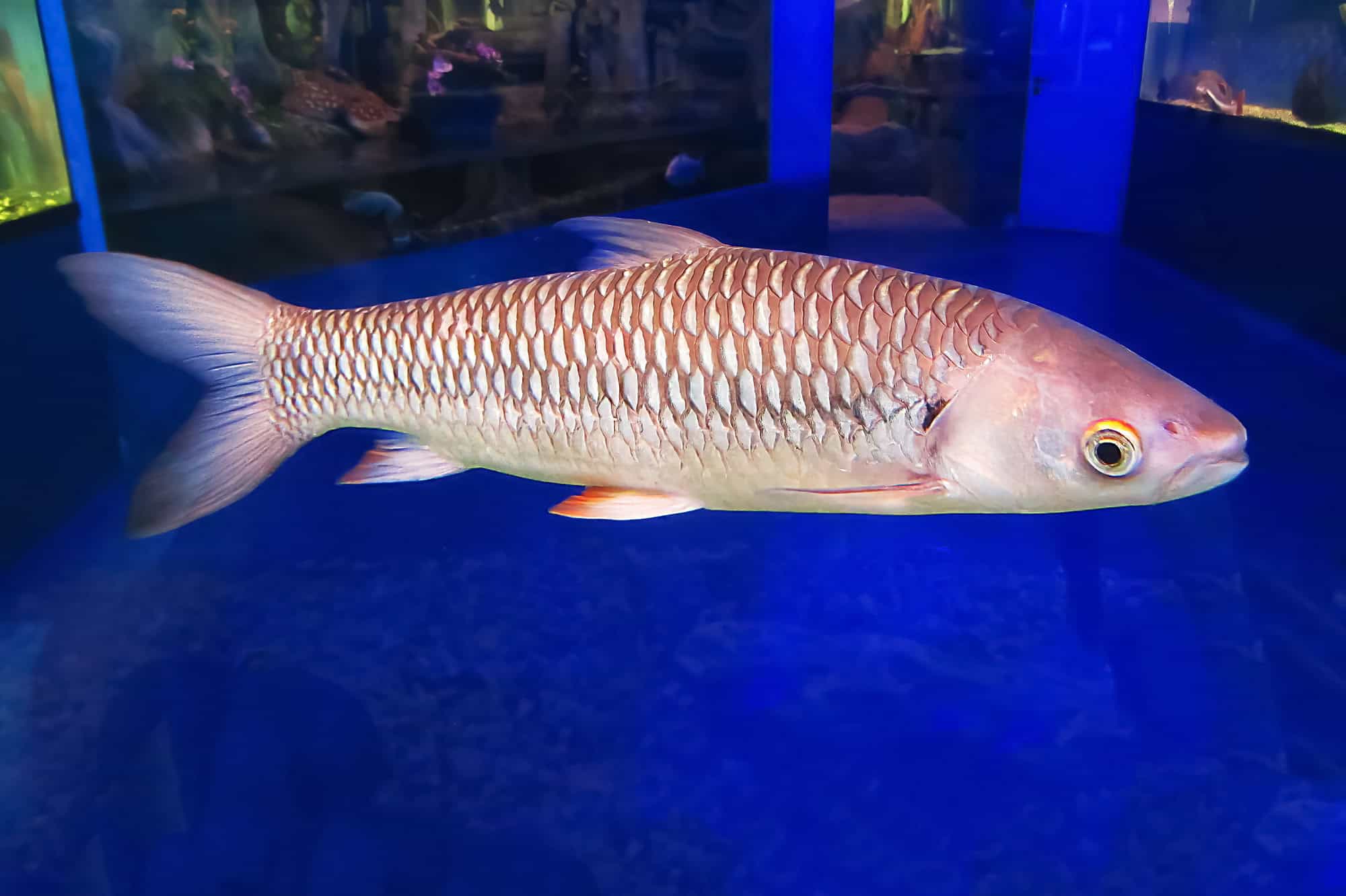
- Scientific name: Balantiocheilos melanopterus
- Adult size: 12-14 inches
- Temperament: Mostly peaceful, but can eat smaller fish!
Bala or Silver Sharks are not really sharks at all, but popular aquarium fish from the carp family. And it just so happens that fish from the carp family often like eating snails!
Since they’re omnivores, bala sharks will eat just about anything that they can fit in their mouths – which means even quite big snails and small fish!
The problem with keeping these tropical fish is that, while they are very beautiful, these shoaling fish also grow much larger than most people imagine.
At over a foot long, fully mature adults are suitable for only the largest home aquariums of 125 gallons or more.
Goldfish
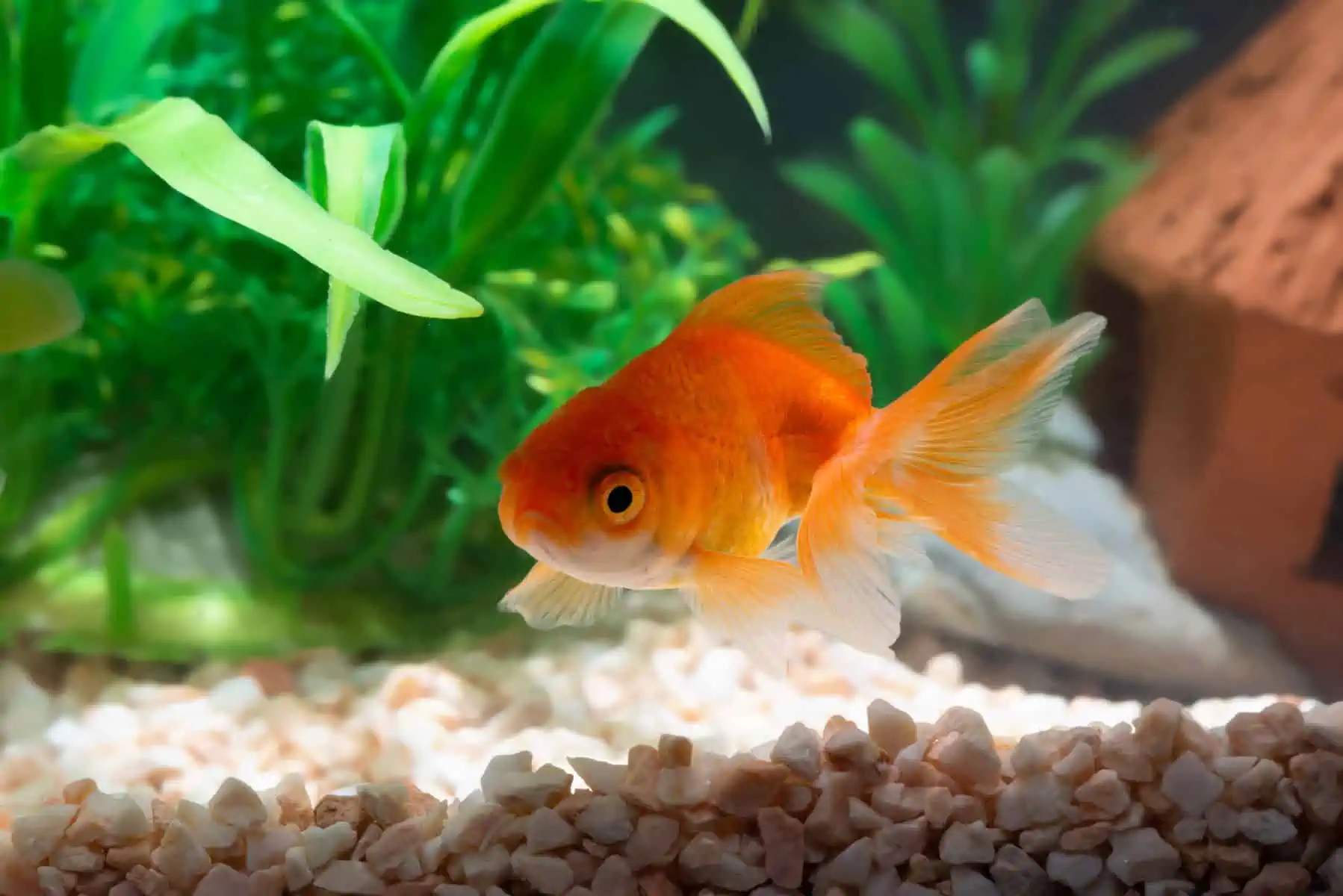
- Scientific name: Carassius auratus
- Adult size: 6-12 inches
- Temperament: Fairly peaceful, but can eat smaller fish
Goldfish are another member of the carp family, so guess what? They enjoy munching on snails and snail eggs too!
And since goldfish can get very big, adults should even be able to take down large snail species.
If you’re looking for snails to clean algae from your goldfish tank, this might not be such good news.
Even large apple snails such as mystery snails could fall victim to a greedy goldfish. But at 3-4 inches in diameter, the biggest rabbit snails and Japanese trapdoor snails have the best chances of surviving a hungry goldfish!
Betta Fish
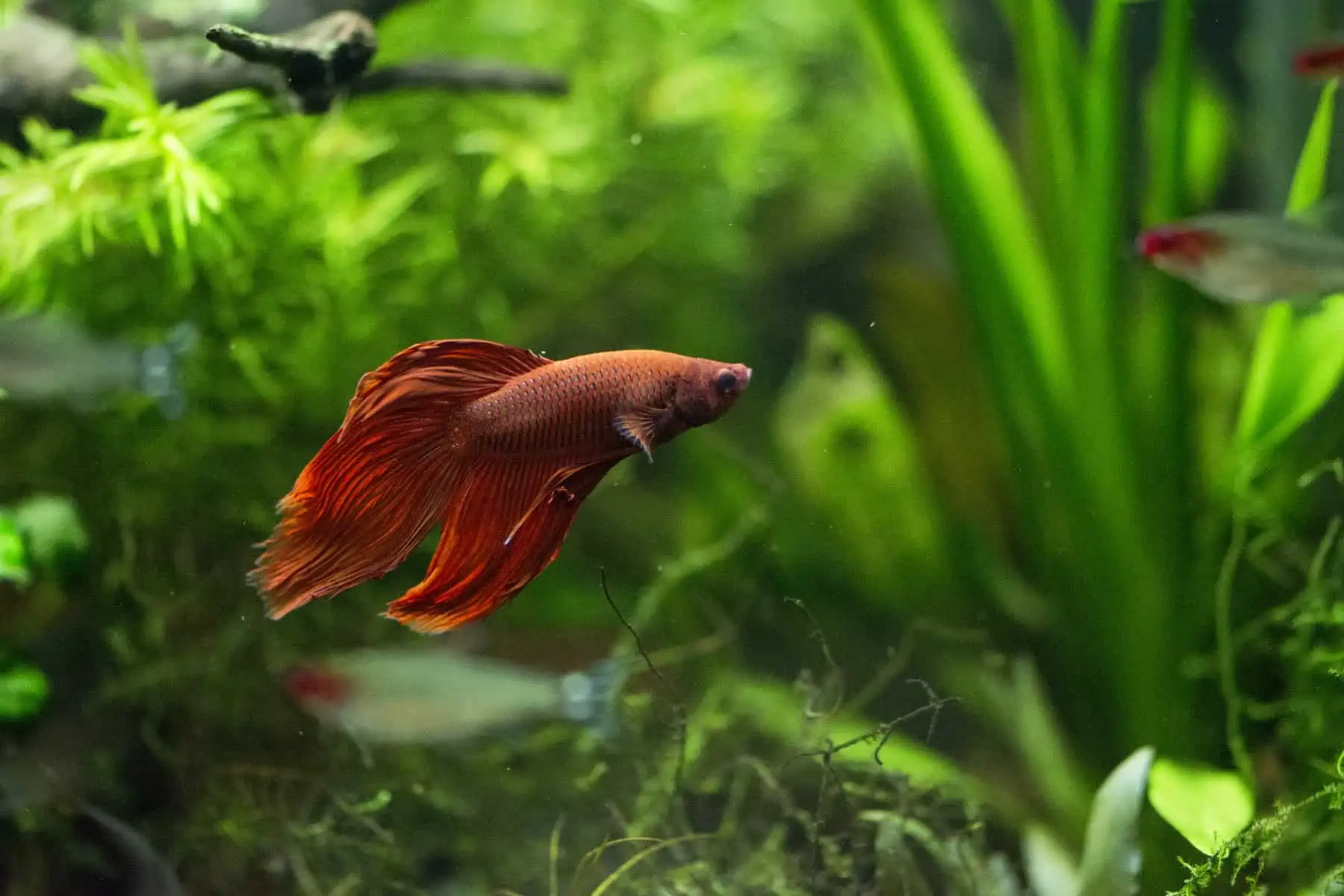
- Scientific name: Betta splendens
- Adult size: 2-3 inches
- Temperament: Aggressive!
Snails are sometimes recommended as good tank mates for betta fish. So why are bettas on our list?
Well, because betta fish have very variable personalities, and while some bettas will live peacefully with snails for years, others will try to kill and eat even quite large snails the moment they see them!
Since bettas will get along with aquatic snails most of the time, they’re not a reliable candidate for tackling a snail problem in your fish tank, but it’s also worth noting their potential as snail predators if you’re considering keeping these two pets together!
The Snail Crusher Hap
- Scientific name: Trematocranus placodon
- Adult size: 10 inches
- Temperament: Aggressive
Most African cichlids are herbivorous and may not be interested in your snails, but this fish is different!
Hailing from Lake Malawi, and Lake Malombe, Trematocranus placodon has won the nickname: ‘The snail crusher hap’ because of its amazing abilities to hunt down and destroy snails in aquariums. It also does this in the wild, and snails are an important part of its natural diet.
Sadly, this fish is rarely kept in the aquarium hobby because it grows to such a large size and is fairly aggressive, meaning it can only be kept with other large, aggressive fish.
Angelfish

- Scientific name: Pterophyllum Sp.
- Adult size: 6-7 inches long and 8-10 inches high
- Temperament: Fairly peaceful, but can eat smaller fish
Although angelfish tend to leave larger snails alone, they can be quick to polish off smaller species of snails, as well as baby snails of larger species.
This makes them useful for controlling populations of snails that breed rapidly, such as mystery snails or Malaysian trumpet snails.
Just remember that these social fish can grow up to 10 inches high, and prefer to be kept in groups, so you’ll need a tank size of at least 55 gallons to see them at their best.
Zebra Loach
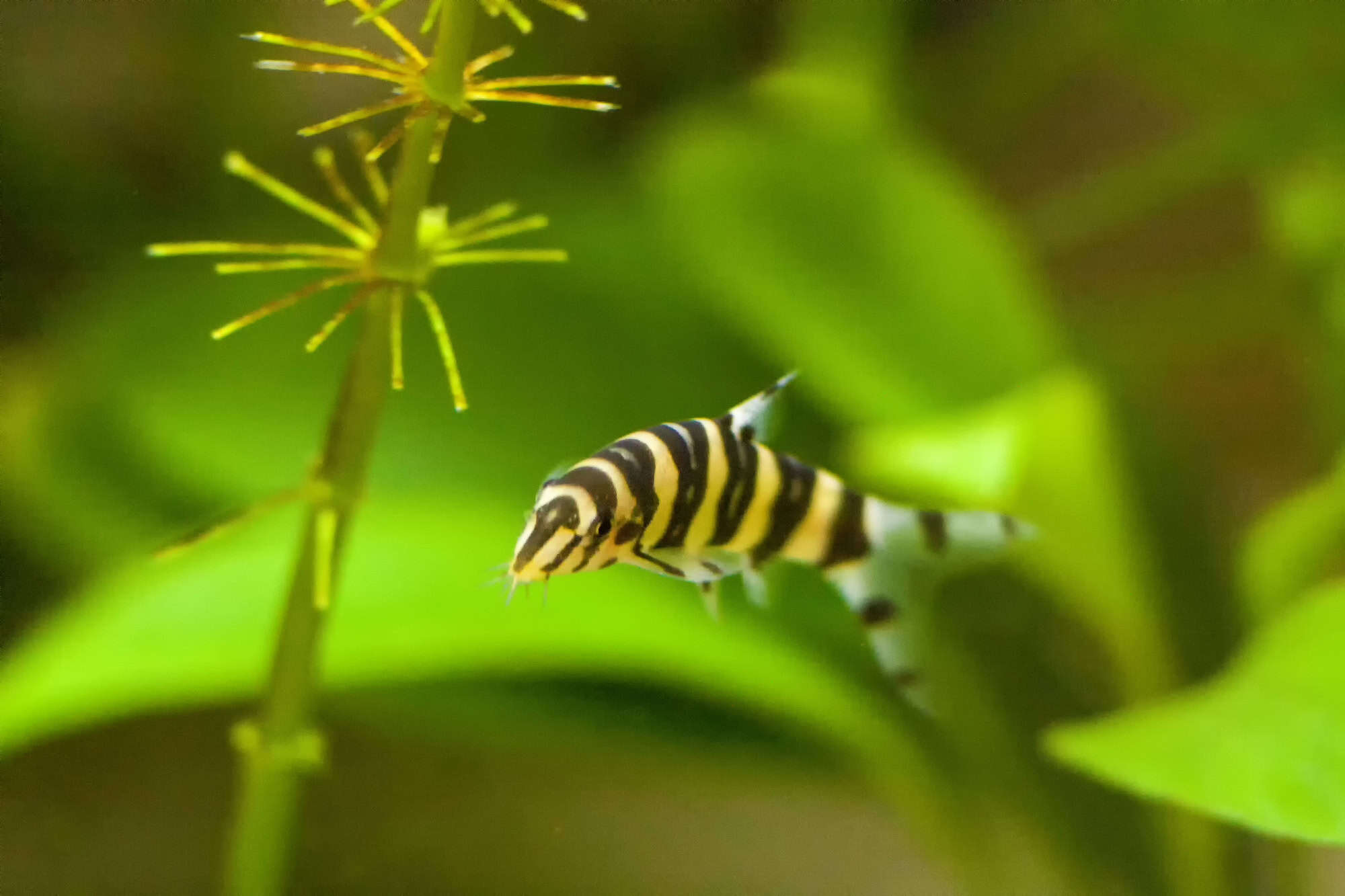
- Scientific name: Botia striata
- Adult size: 3.5 inches
- Temperament: Peaceful, but can nip fins.
Another loach from the Indian subcontinent, zebra loaches are happier in stiller water than many of their cousins. Other names for them include candy stripe loach, striped loach, and tiger loach.
Like many other loaches, these schooling fish love to dig around for snails as a high-protein snack. Tiger loaches tend to be fairly peaceful towards other fish when kept in a group of six or more, but do watch out for their unfortunate tendency to nip at fish with fancy fins.
It’s important to note that this beautiful fish is endangered in its native habitat due to pollution and development, so please only buy young fish sourced from captive breeding programs.
Clown Loach
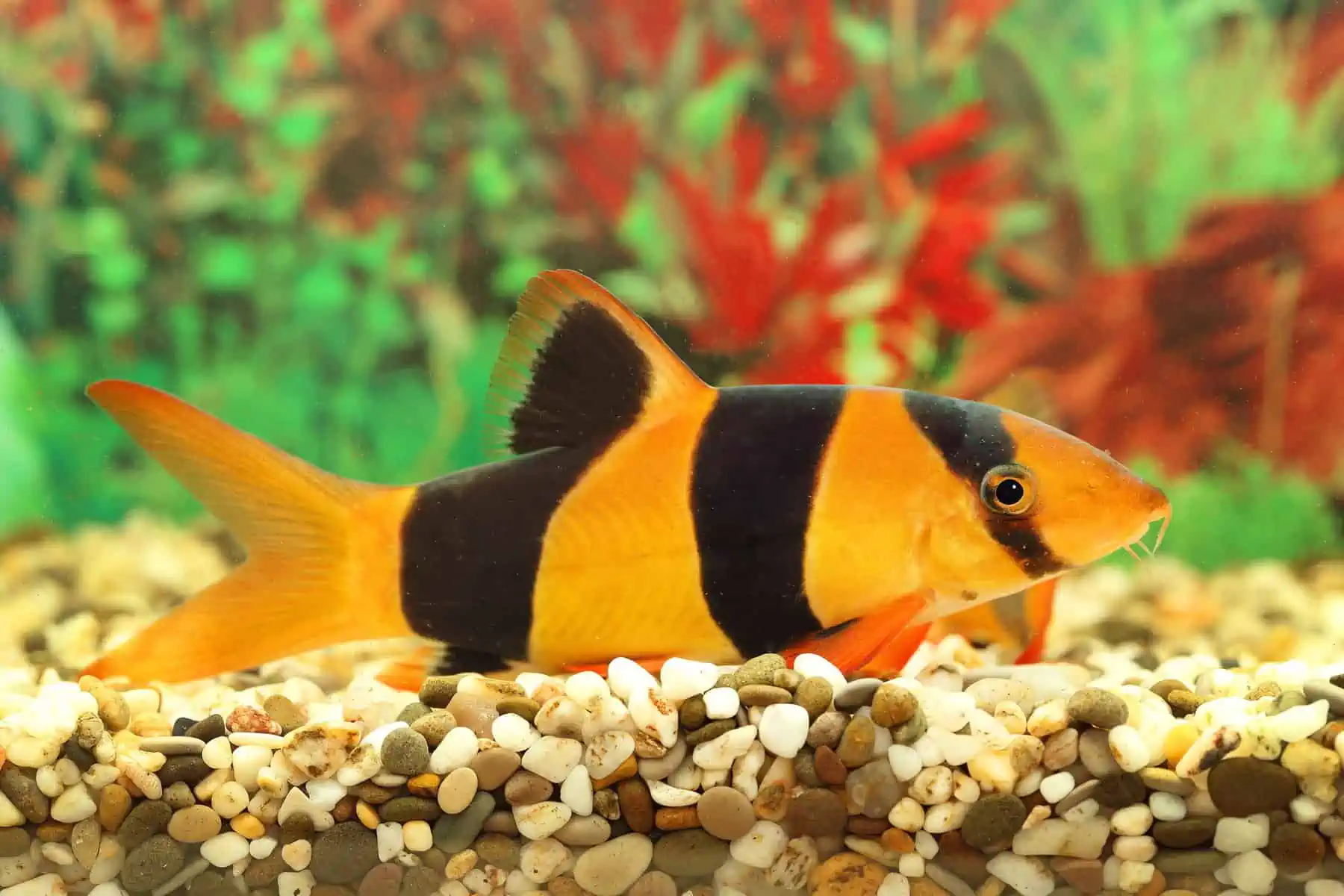
- Scientific Name: Chromobotia macracanthus
- Adult Size: 6-12 inches
- Temperament: Fairly peaceful
Clown loaches only just made our list, because they’re not exactly specialist snail hunters like some of their loach cousins.
Yet clown loaches are adorable, and will eat the odd snail here and there, helping to control populations while probably not eliminating them. Sometimes that’s exactly what you want!
Bear in mind that clown loaches get bigger than many people realize. Fully grown specimens of this handsome fish can reach 12 inches, and can also live for over 20 years in an aquarium when well-cared for.
Kuhli Loach
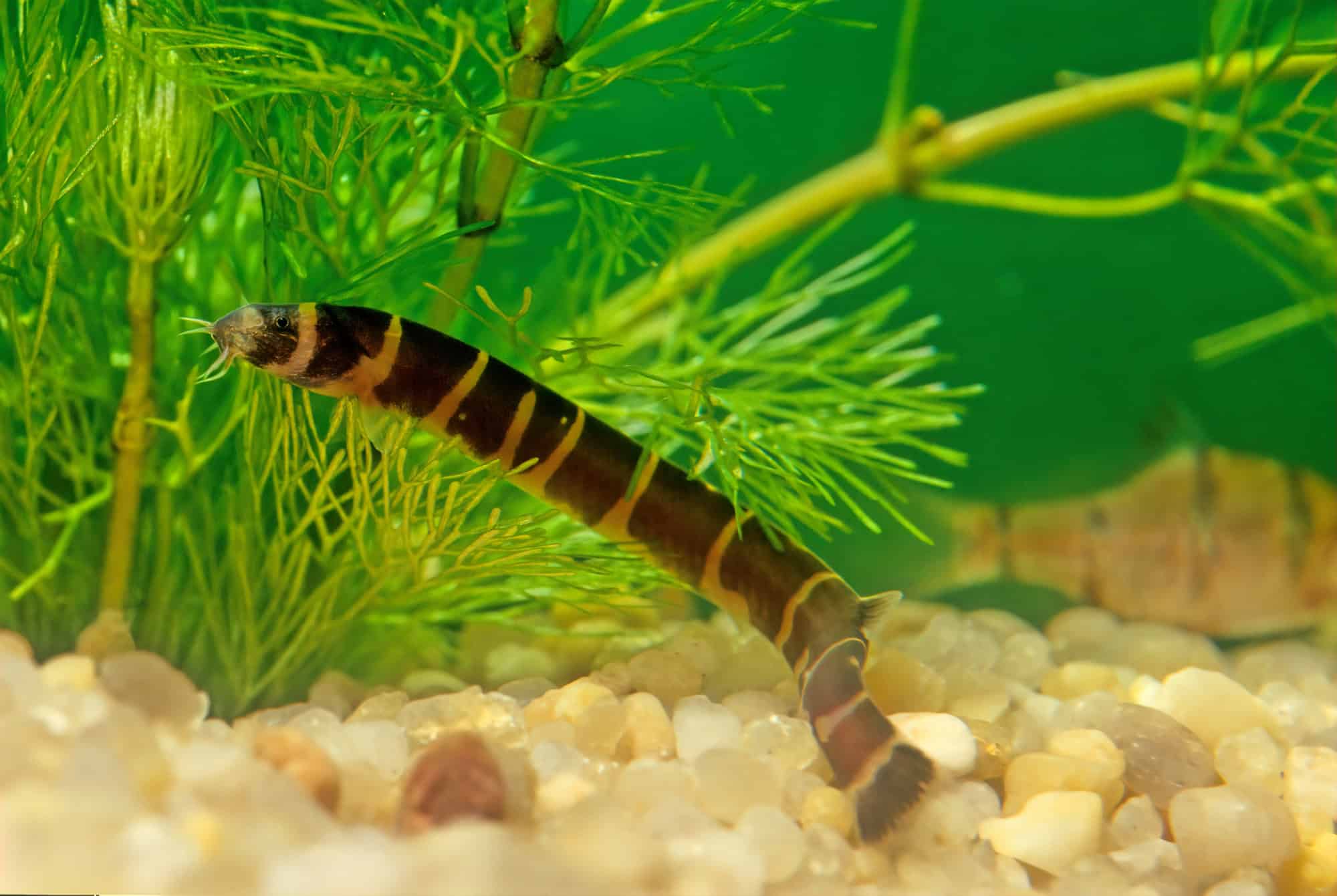
- Scientific Name: Pangio kuhlii
- Adult Size: Up to 4 inches
- Temperament: Peaceful
Kuhli loaches are incredibly cute, eel-like loaches with beautiful barred stripes.
Some people have reported dramatic declines in their snail populations after adding kuhli loaches – which may seem surprising given how small they are!
But I’m guessing that their agile, eel-like bodies are perfect for turning snails over and getting at their delicate flesh.
Kuhli loaches are incredibly shy fish that usually prefer to hide for most of the daytime. But it’s better to savor the rare glimpses of these fabulous fish rather than remove their hiding places. When kuhlis are well-cared for, they can live for up to 14 years.
Convict Cichlids
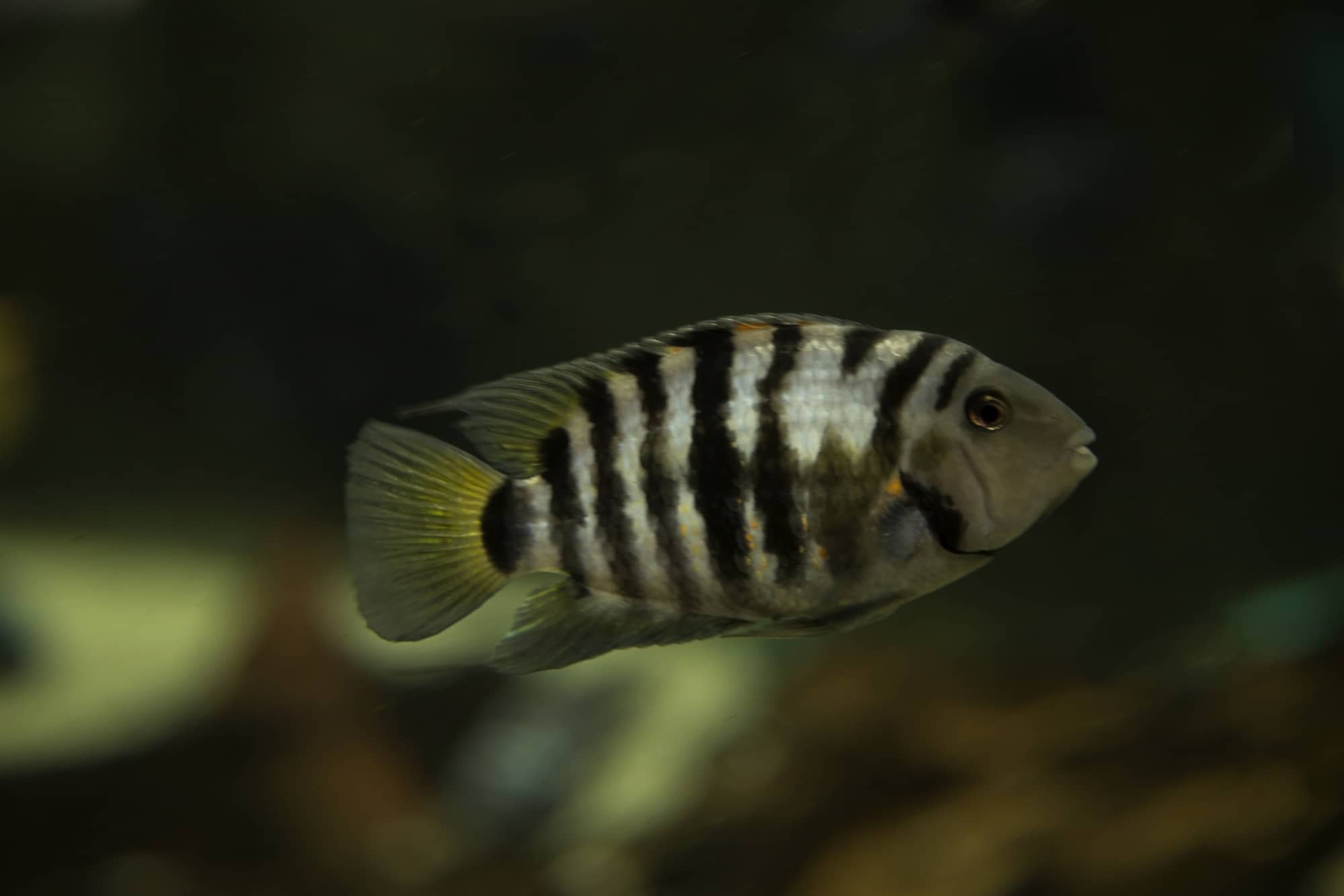
- Scientific Name: Amatitlania Nigrofasciata
- Adult Size: 4-5 inches
- Temperament: Moderately aggressive
Coming from Central America, the semi-aggressive convict cichlid can be kept in a community tank, but only with other large, robust fish. They become more aggressive when breeding, and if you have males and females, it’s only a short matter of time before they’ll start!
Snails likely add a healthy dose of protein-rich nourishment for these fish, which they need for fuelling their prolific breeding habits.
Some fish keepers have reported their entire snail population obliterated after introducing convicts. But since they only grow to around 4-5 inches, they’re unlikely to take on larger snail species like mystery snails or rabbit snails (unless they’re very hungry!).
Jack Dempsey Cichlid
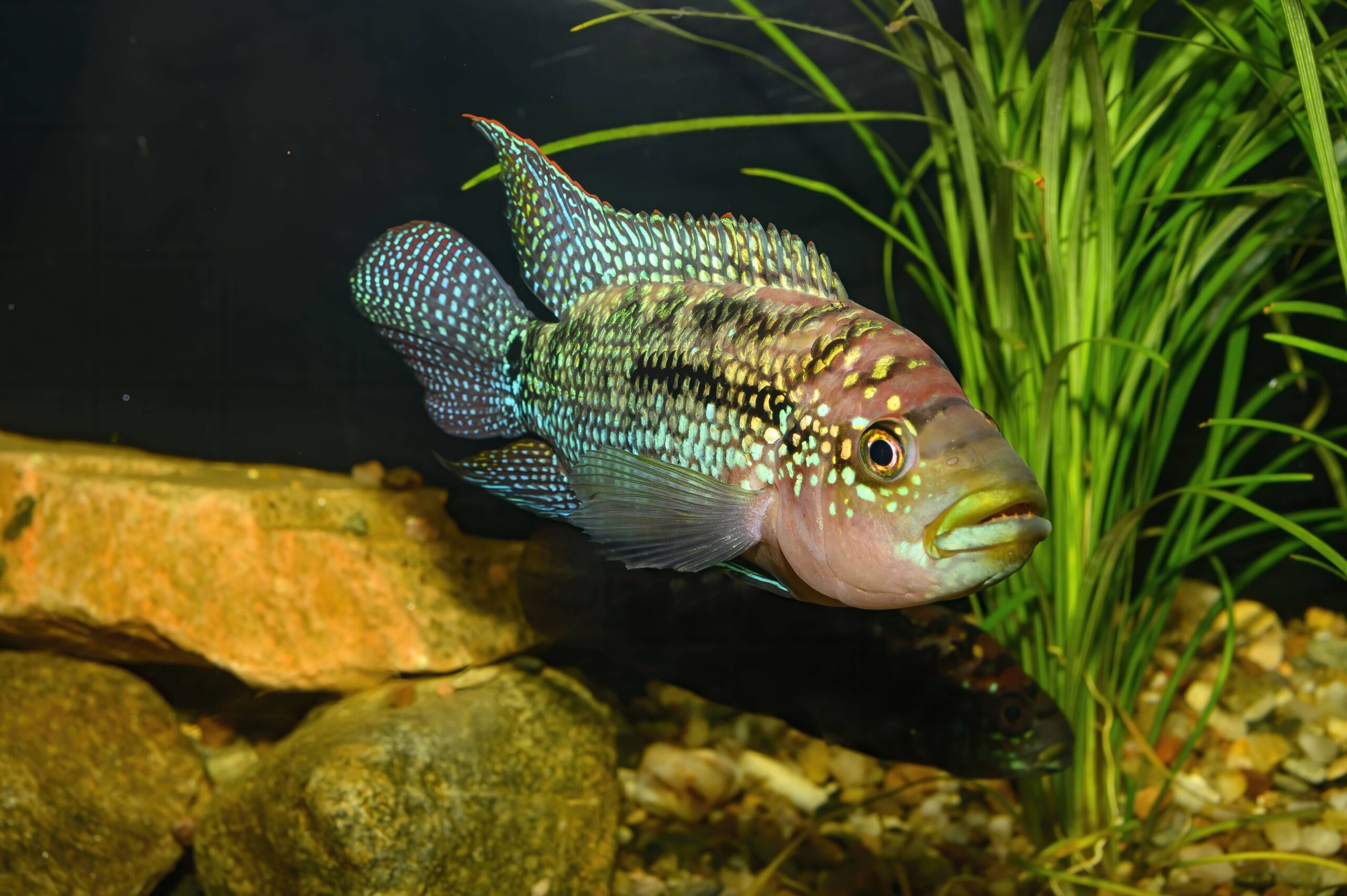
- Scientific Name: Rocio octofasciatum
- Adult Size: 10 inches
- Temperament: Very aggressive
Named after the famous boxer, Jack Dempsey cichlids are renowned for their fierce nature and may strike at anything they can fit in their mouths. Since they grow up to 10 inches in a large aquarium, that might even mean your largest snails!
Suitable tank mates for Jack Dempseys include other large, robust Central or South American cichlids such as convict cichlids and fire mouth cichlids. But since fights can easily break out between species, this type of setup is only recommended for advanced aquarists.
Jack Dempseys are especially aggressive during their breeding time when they’re better off given their own tank. The extra protein from your aquarium snails could help them raise a large brood!
Rainbow Cichlids
- Scientific Name: Herotilapia multispinosa
- Adult Size: 3 inches
- Temperament: Fairly peaceful
Rainbow cichlids are one of the smallest Central American cichlids and also one of the most peaceful. Their vibrant bodies are made up of blue, green, red, and yellow shades, so it’s no wonder how they earned their name!
But despite being small and peaceful, many people have reported that their rainbow cichlids love eating snails. Mollusks likely make up an important part of this fish’s diet in the wild too.
Kissing Gourami
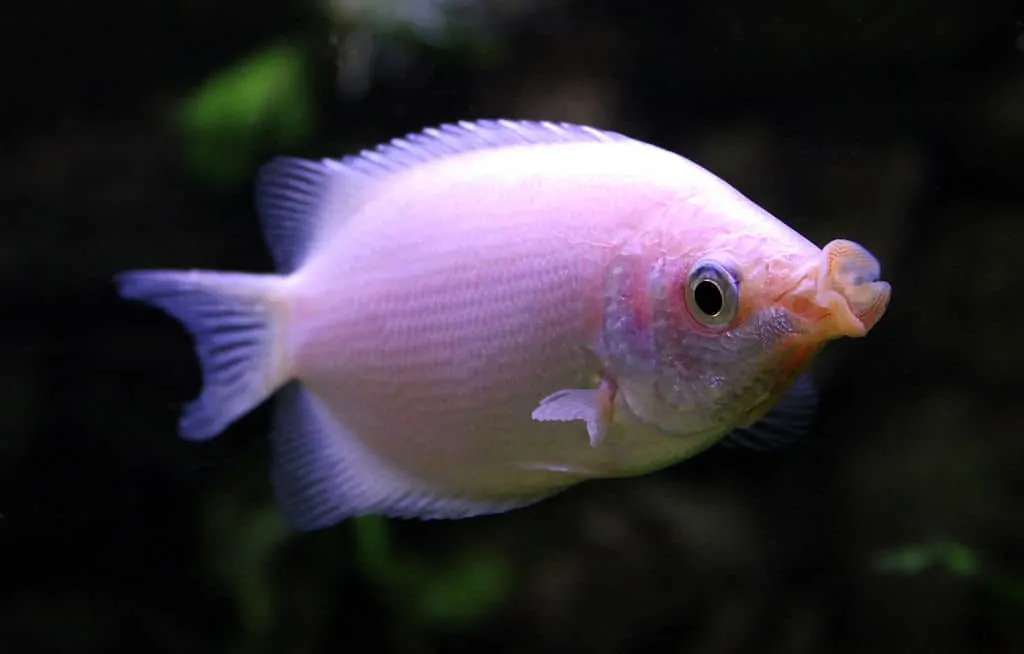
- Scientific Name: Helostoma temminckii
- Length: 8-12?
- Temperament: Semi-aggressive, will eat smaller fish
Most gouramis will eat a few snails, but kissing gouramis are one of the largest members of the family and will likely eat a wider variety of them.
Kissing gouramis get their name from their fascinating ‘kissing’ behavior, which is used both in courtship and in territorial disputes. Once the gouramis have locked lips, they’ll sometimes push and pull each other over large distances across the aquarium!
Growing up to a foot long, kissing gouramis need a tank size of at least 75 gallons. But if you have a large enough aquarium, kissing gouramis will likely help at keeping your tank clear of snails.
Paradise Fish
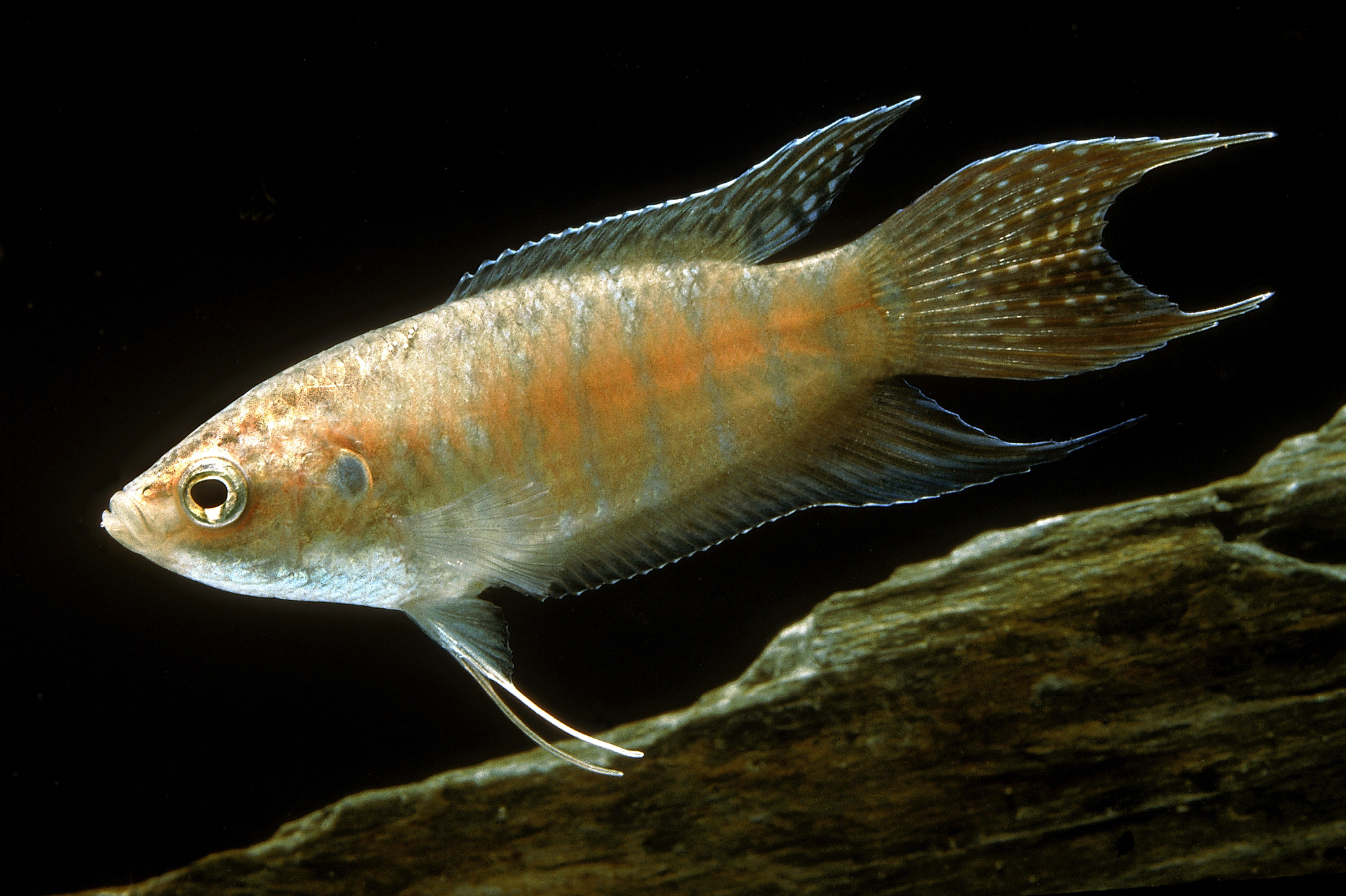
- Scientific Name: Macropodus opercularis
- Length: 3-4?
- Temperament: Aggressive
Strictly speaking, paradise fish are a type of gourami. They were awarded their evocative name when they became one of the first exotic aquarium fish to be introduced to the west in the 19th century.
One of the reasons they were chosen is because paradise fish come from surprisingly northern territories, extending all the way north to Korea, which means they can live in coldwater aquariums without a heater.
Regarding snails – many people have reported that this aggressive fish will quickly decimate entire snail populations in their aquariums. But since gourami personality varies widely, there’s never a 100% guarantee they’ll do the same in yours.
The Skunk Loach
- Scientific Name: Yasuhikotakia morleti
- Length: 3-4?
- Temperament: Fairly peaceful
While many loaches are adept at eating snails, many of them are too large for the average fishkeeper. But not skunk loaches. These cute little fish are sometimes known as ‘mouse botias’ and only grow up to 4 inches long.
They do like to be kept in schools though, so you’ll still need an aquarium of at least 30 gallons to host 6 of them.
Other than snails, skunk loaches will also accept brine shrimp, mosquito larvae, tubifex, daphnia, algae wafers, and other vegetable foods, but are unlikely to eat commercial fish foods.
Crayfish
- Scientific Family: Astacidae
- Adult Size: 1.5 inches – 12 inches depending on the species
- Temperament: Aggressive
Crayfish are omnivorous and will eat almost anything they can get in their claws!
So snails are definitely on the menu for crays, but there seem to be mixed opinions about how readily they’ll dispatch a large population.
Some aquarium owners have reported that their crayfish finished off their pest snails rapidly, while others say their crays only seem to tackle snails when they’re especially hungry.
A lot must depend on the size of the crayfish compared to the snails. While dwarf crayfish will likely gobble up smaller snails like pond snails and bladder snails, it might take a larger species to take on any fully-grown mystery snails.
The problem with larger crayfish is that they might also enjoy catching and eating your fish! So there’s a riddle for you…
Assassin Snails
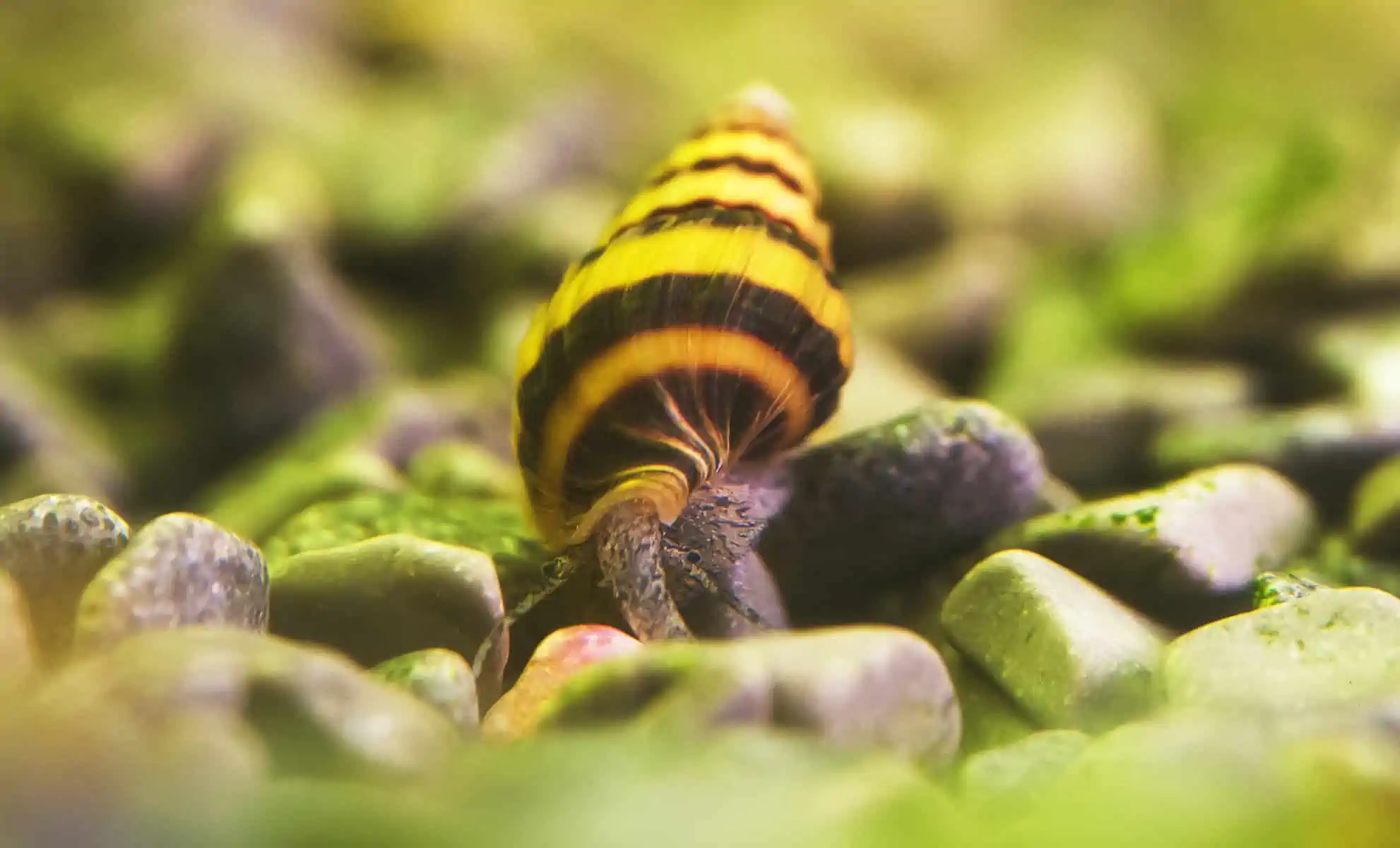
- Scientific name: Clea helena / Anentome helena
- Adult size: 2-3 inches
- Temperament: Peaceful
Okay, okay, so assassin snails are the odd ones out here. What is another snail doing on our snail-eating list?
Well, assassin snails are so-called because they’re literally expert snail assassins! Believe it or not, these unusual mollusks are fierce predators and will chase down and kill other snails for their own sustenance.
Assassin snails are so good at this, they might even be the single most effective snail killer on our list. Sometimes you’ve just got to fight fire with fire!
Having said that, there’s one kind of snail that assassins don’t seem so interested in, and that’s the limpet-like cap snail. But cap snails are so tiny that many aquarists aren’t that bothered by them, and they’ll likely get hoovered up by a loach or a catfish anyway!
The Ones That Got Away…
Some of the fish that are frequently recommended as snail eaters also grow to enormous sizes and require tanks much bigger than most people would keep at home.
These include banjo catfish, striped raphael catfish, dojo loaches, weather loaches, and giant gouramis.
Snail-eating Fish FAQs
Can Eating Snails Harm My Fish?
Since aquarium snails can occasionally harbor fish diseases, some people have worried that eating snails could harm their fish.
The answer is: it could, but it’s unlikely.
Freshwater fish diseases like ich, schistosomiasis, trematodes, and nematodes can all be carried by snails, and if your fish eats them, they could become infected.
But thankfully, snails harboring diseases is fairly rare, and most infections could get passed onto your fish without them eating the snails anyway.
Do Shrimp Eat Snails?
You may have noticed that there are no shrimp species on our list of snail-eaters, and that’s because shrimp don’t normally eat snails!
Some aquarists have reported coming home and finding their shrimp feeding upon a dead snail, but it’s very unlikely that the shrimp would have killed the snail, unless, perhaps, it was extremely hungry!
Even huge freshwater shrimps such as vampire shrimps have been known to live a peaceful existence with large snails such as mystery snails and rabbit snails.
Which Aquarium Snails Are Considered Pests?
Pest snails are either species that will eat live plants, breed out of control, or both!
So, Which Snails Will Eat My Aquarium Plants?
Pond snails, rabbit snails, and some species of apple snails have been known to occasionally chew on healthy aquarium plants if they’re hungry.
Most of the time, however, they will only eat plant matter that is already decaying or dying – which could be seen as a helpful cleaning service!
But that’s not the case for Giant Columbian ramshorn snails. These voracious snails will chow down on all kinds of aquarium plants and can quickly decimate a planted aquarium.
If you’re unlucky enough to have them in your tank, it’s time you looked for some fish to eat them for you!
Which Snails Can Breed Out of Control in Freshwater?
Bladder snails, pond snails, Malaysian trumpet snails, ramshorn snails, and mystery snails are all prolific breeders and can quickly overwhelm a freshwater aquarium with their ever-expanding numbers.
Leftover fish food that the snails eat, as well as poor-quality water, often makes the problem worse.
Better-behaved snails include rabbit snails, which only breed slowly, and nerite snails, which don’t breed in freshwater at all.

